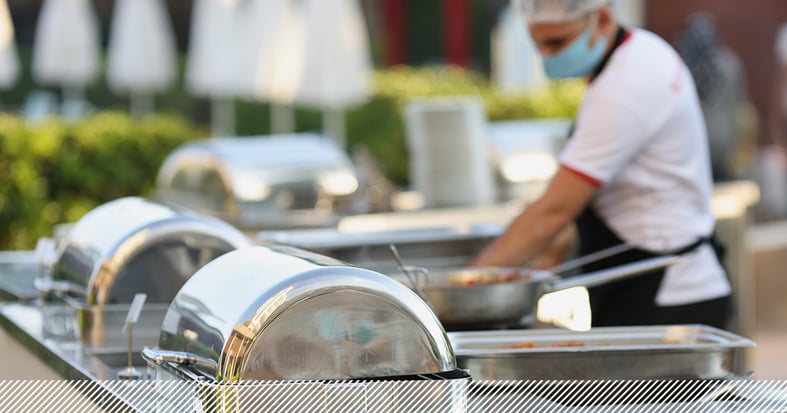Buffets are making a come-back: 4 tips to keep food waste at bay

When COVID-19 took hold in 2020, one of the first dramatic changes in foodservice was the disappearance of buffets and salad bars. As the industry (and the world) continues to return to something more like a pre-pandemic normal, self-serve operations continue to come back online. Las Vegas, one of the buffet capitals of the world, continues its dining return; Disney Parks continues reopening buffet service; and one of the U.S.’s leading college trend setters, Penn State, just reintroduced self service.
While this is positive news for the industry, the return of buffets and salad bars brings with it the probability of increased food waste, particularly as staff reacquaint themselves with these service styles.
Here are some best practices to avoid food waste as you bring buffets and salad bars back:
- Shrink the line toward the end of service: As traffic wanes toward the end of service, downsize pan sizes to mitigate overproduction. Having to fill a half pan is more likely to lead to less food waste at the end of service than filling a whole pan. Likewise, reduce from a two-sided buffet or salad bar service to one side, so you are only filling pans in one line rather than two. Add signage to let customers know you are downsizing the line because you care about food waste.
- Incorporate cook-to-order: Another strategy for avoiding overproduction toward the end of service is to actually let buffet pans go empty, but offer cook-to-order for the last customers. You avoid cooking large batches that will probably lead to waste, and you show customers increased hospitality by cooking their meal fresh. And again, provide signage letting customers know about the priority you put on preventing food waste and “Please let us know if there’s something you’d like.”
- Avoid over-merchandising: A buffet or salad bar needs to be visually appealing, but over-merchandising can lead to unnecessary waste. Here are some tips: avoid bread “baskets.” Instead merchandise individual items on a flat surface to take up more space with fewer items. Use vertical containers if possible, adding visual contrast and allow for less volume of product to fill space. Separate mixed items when possible to allow for better repurposing. It also gives guests more choice while maintaining freshness. For instance, instead of serving a fruit salad, merchandise fruits in individual bowls for visual appeal and less plate waste. Repurpose individual fruits not displayed in house-made pastries or jams.
- Use the salad bar for repurposing: For instance, repurpose leftover proteins from other stations. Have left-over chicken from your burrito bar? Add to the salad bar. Have left-over bacon from breakfast? crumble into bacon bits. It can be a lot easier to make margins work for salad bar proteins if they are being repurposed from other stations.
For more tips and ideas check out our e-books Preventing Food Waste at the Buffet and Preventing Food Waste at the Salad Bar.